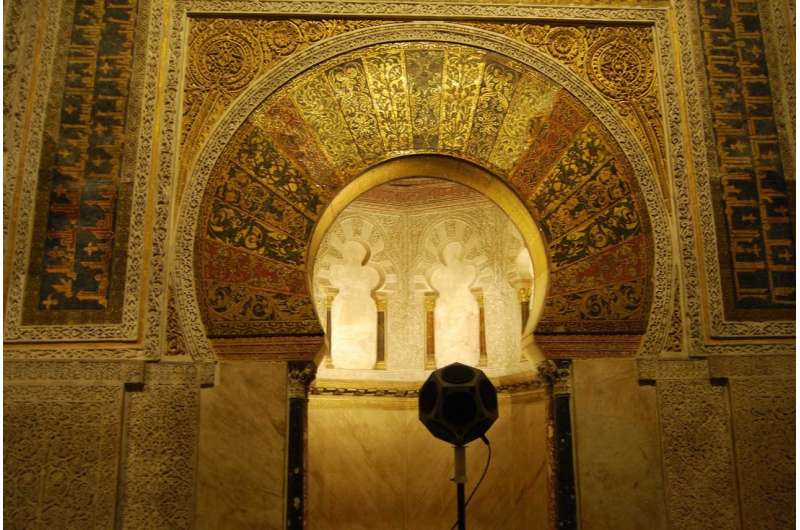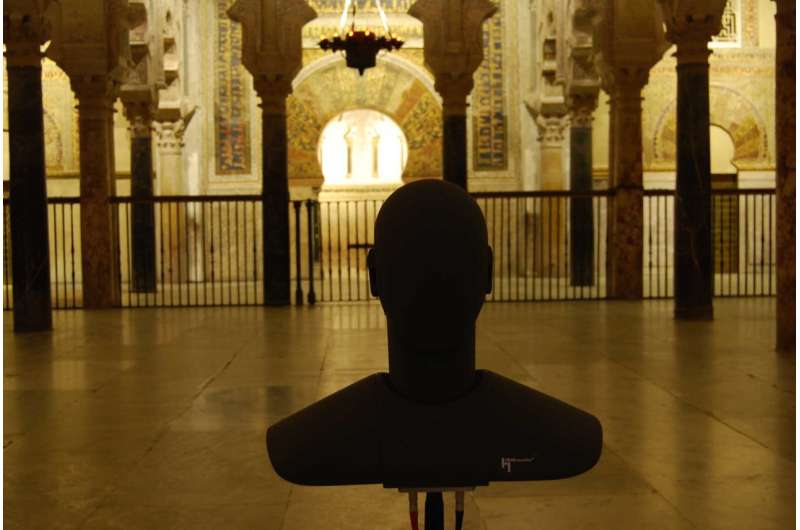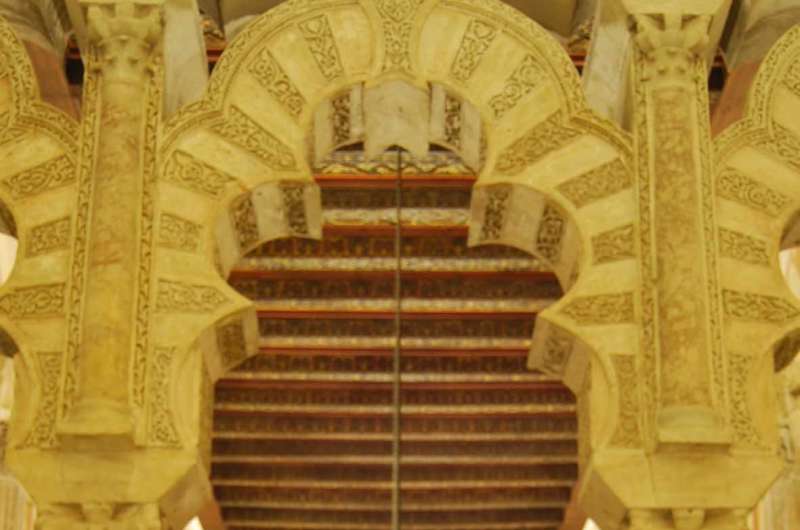Mosque of Cordoba Credit: University of Seville
How did sound propagate inside the Mosque of Cordoba in the time of Abd al-Rahman I? Today, thanks to virtual simulation tools, it is possible to know the sound fields of spaces that no longer exist. This field of work is known as acoustic archaeology by some researchers. Working in this field, researchers from the Higher Technical School of Architecture at the University of Seville have carried out a study in which they have determined the variation of the acoustic parameters such as reverberation, clarity or definition in the Mosque of Seville.
Faced with the visual homogeneity of the interior of the Islamic mosque, the results obtained in the acoustic study confirm that sound perception varies by area. This is due to the successive expansions that the temple has experienced during its history.
"The mosque founded by Abd al-Rahman I responded acoustically to Muslim liturgical requirements, providing a living space that favoured their majesty. Later expansions gave a formal appearance of superposition on the pre-existing space. However, notable sound differences were produced in the interior space. This, united with the increase in depth caused by the expansion of Abd al-Rahman II, meant a reduction in the acoustic quality of the areas furthest away from the qibla wall," explains the University of Seville professor Juan José Sendra.
With the expansion of Al-Hakam II, two acoustically juxtaposed mosques were obtained. The last lateral expansion, by Al-Mansur, in which even the mihrab was decentred with respect to the new layout, was separated from the rest of the building, with a clear degradation in the quality of verbal communication.
Mosque of Cordoba. Credit: University of Seville
The Christian era
The Christian transformations of the Mosque, which made it suitable for use as a cathedral, substantially modified the Muslim space. Therefore, the experts find that the modern-day space of the Mosque-Cathedral is a "complex architectural unit," with a multiplicity of sound spaces, the fruit of all the spatial transformations that have taken place, each different according to the spatial archetype, whether Muslim or Christian.
Mosque of Cordoba. Credit: University of Seville
Sound spaces
The research group spent more than a decade working in this field of study. In recent years, two Plan Estatal I+D+I (State R+D and innovation) Projects on Spanish cathedrals, mainly Andalusian, stand out. Various articles have been published from different perspectives, which analyse the sound in the cathedrals of Seville, Granada, Malaga, Cordoba and Jaen. Specifically, in the case of Seville Cathedral, articles have been published that analysed both the acoustic-spatial variety of the cathedral space, as well as the influence certain special spatial configurations have on acoustics for concerts, or how temporary architectural features present for certain religious celebrations.
Currently, they are also working on publishing a book to decodify the complex and fragmented space of the Mosque-Cathedral today via analysis of its process of evolution from the first mosque of Abd al-Rahman I until the present day, with the aim of recovering a lost sound memory.
More information: Rafael Suárez et al, Virtual acoustic environment reconstruction of the hypostyle mosque of Cordoba, Applied Acoustics (2018). DOI: 10.1016/j.apacoust.2018.06.006
Provided by University of Seville


























